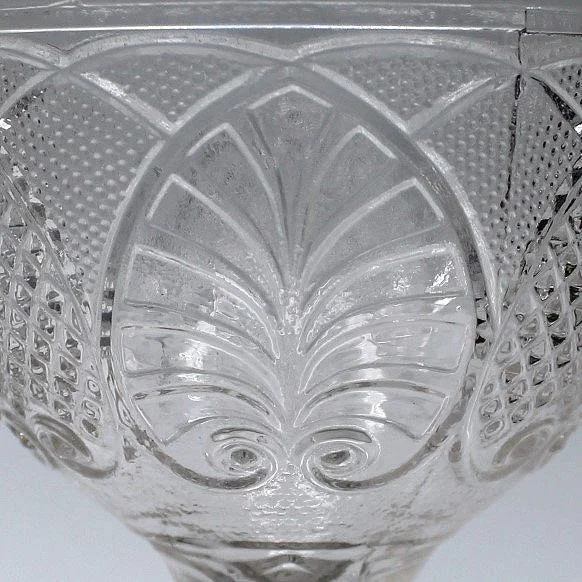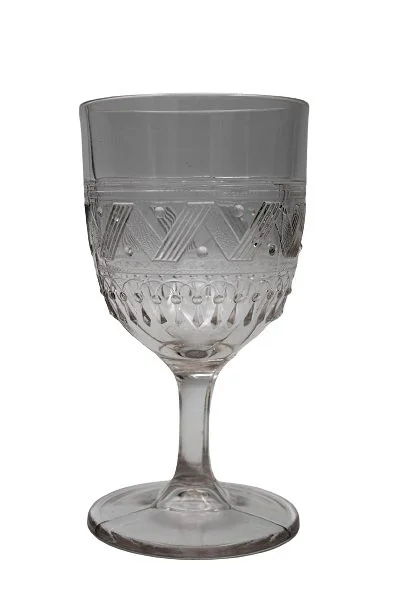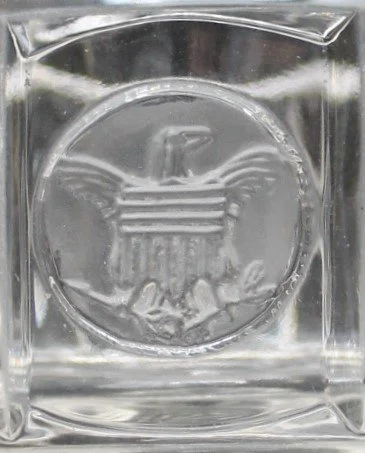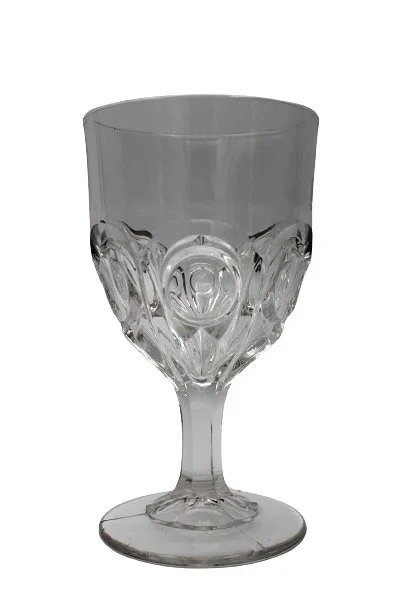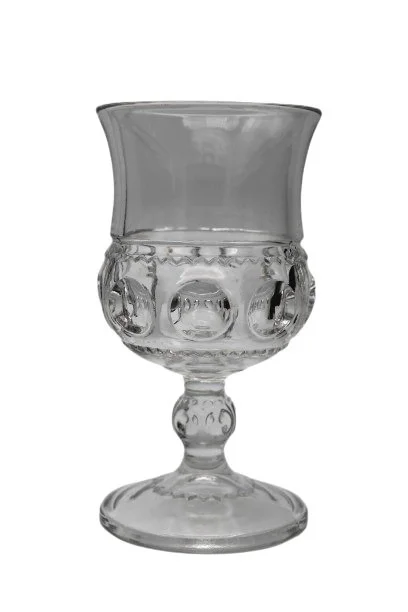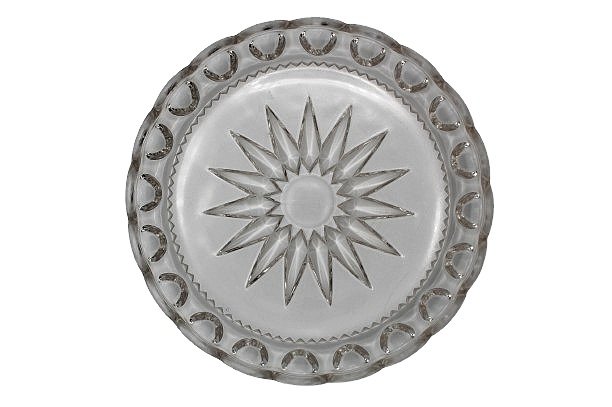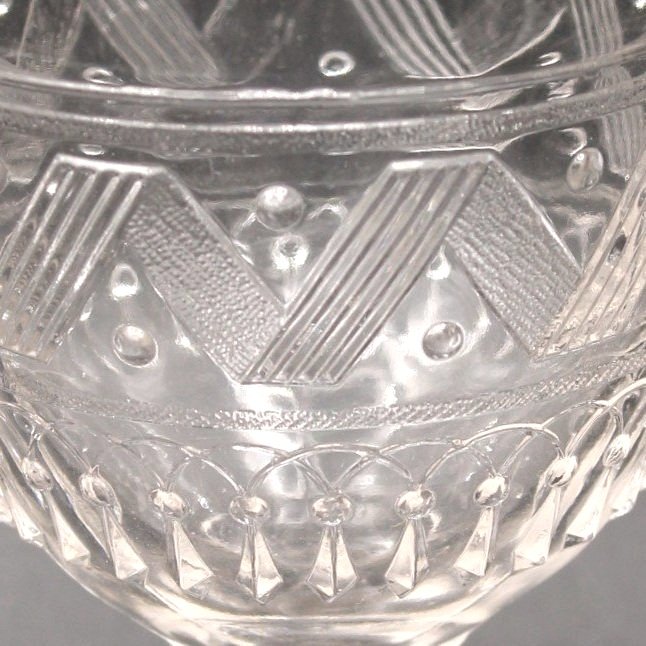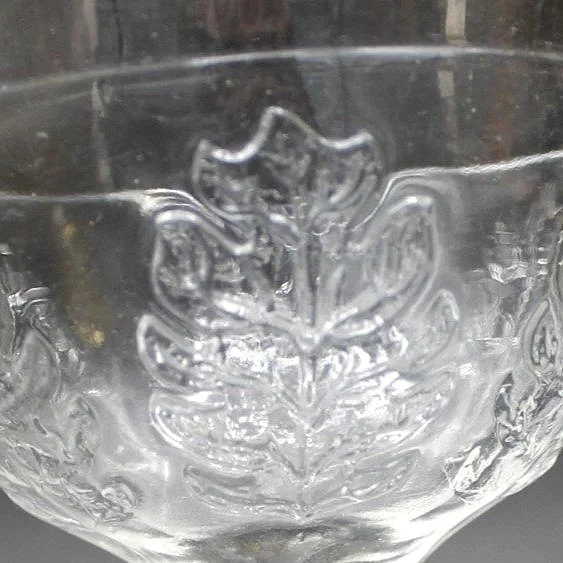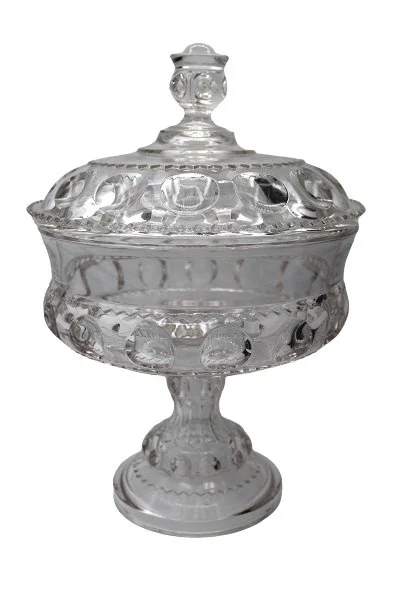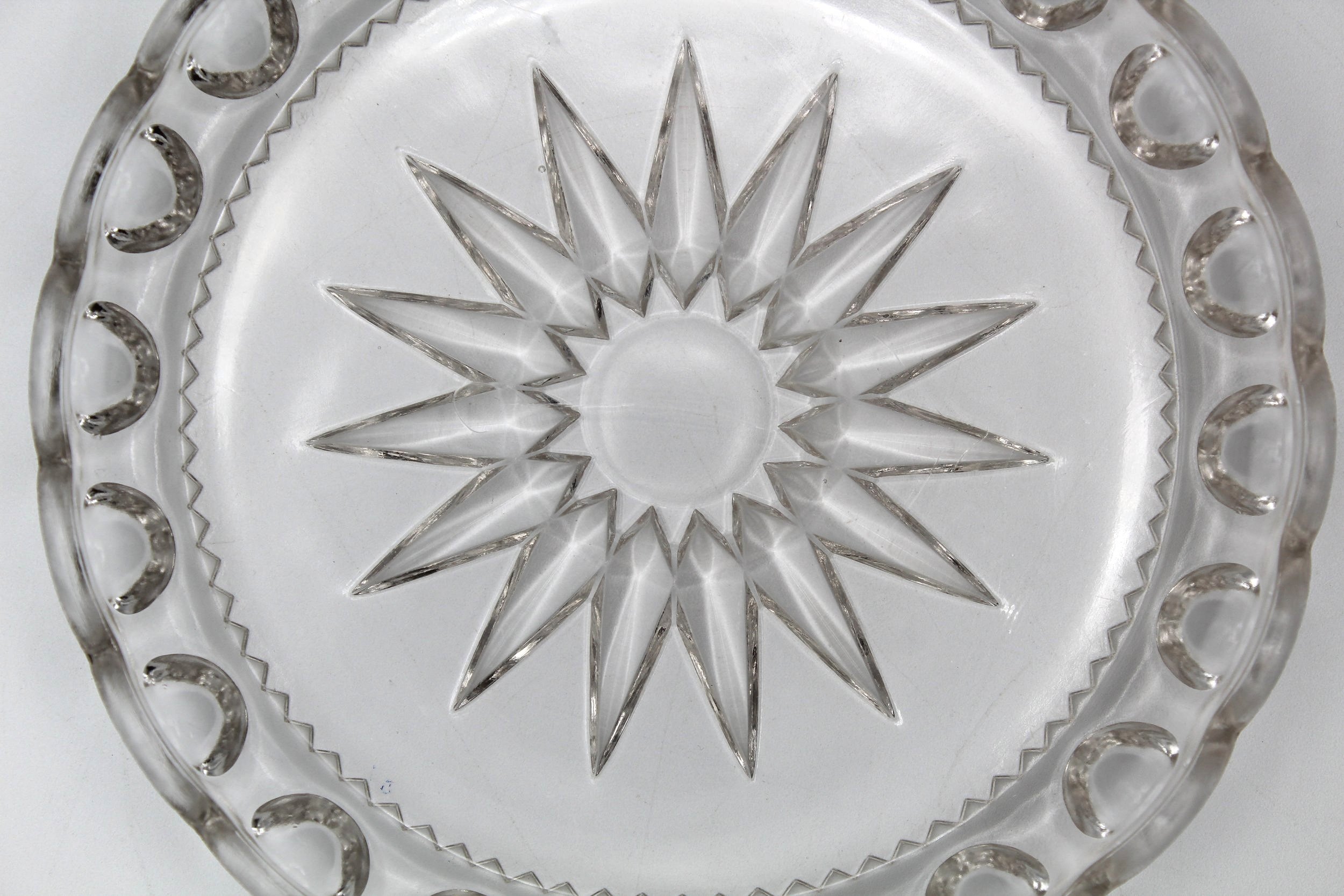
Clear Glass
Sets or samples: reasons for collecting
Collectors like the Laidlaw sisters don’t just acquire objects.
They create new meanings for them, and shape how future generations view them.
Various clear glass pieces. Shown in further detail and identified below.
This glassware was made in 19th and early 20th century Canada and the United States.
As these pieces were passed along, from their unknown original owners and eventually to collectors like the Laidlaw sisters and the KLMA, their meaning and purpose changed.
This glassware tells us more about its owners than about its creators.
It provides clues about who Jean Shields and Peggy Woodrow were, as people and collectors, and the social and decorative uses of their collections.
Canadian- and American-made glassware are very similar.
Four Canadian and various American companies made pressed glass in hundreds of patterns. Most of those patterns were made in both countries, and most of those companies didn’t add maker’s marks.
Goblet with Palmette pattern. Possibly by Burlington Glass Works, Hamilton, Ontario, 1875-1909. 16 cm tall. 1975.678.1
Most of the pieces in this section feature patterns that were made in both countries.
This pattern was also made by American companies.
Jean Shields collected a “sample set” of clear goblets.
Three-quarters of her goblets are one-offs.
Focusing on goblets allows her collection to represent a wide variety of patterns and body types.
Collecting one of each goblet, rather than full sets, would have saved money and space, while allowing Jean to enjoy the wide variety of designs that were available.
At right: Goblet with pressed leaf pattern. Possibly by McKee of Pittsburgh, USA, 1868. 14 cm tall. 1975.685.1
The Kenlee pattern was only produced in Nova Scotia.
This unmatched set of goblets would be unsuitable for formal entertaining, but it makes a very enjoyable display.
At left: Goblet with Kenlee pattern. Nova Scotia Glass Company or Diamond Glass Company, Nova Scotia, 1881-1892. 15 cm tall. 1975.692.1
This rare, distinctively American pattern features elements from the American and Spanish coats of arms and the faces of Christopher Columbus and Amerigo Vespucci.
This pattern is a modified version of the US Coin pattern, which used motifs from real coins and was banned by the US Treasury Department as a result. In response, Central Glass Co. replaced the coin motifs with these tie-ins to the Columbian Exhibition at the Chicago World’s Fair.
At left: Goblet with Columbian Coin pattern. Central Glass Co., USA, 1892. 15cm tall. 1975.729.1
Reproductions were made starting in the 1960s. This goblet is believed to be original.
Jean also collected a set of twelve Filly or Notched Bulls Eye goblets.
This matched set is unusual for Jean’s collection and may have been used for social events.
The large size of this set allowed the museum staff to collect differently: we were able to dispose of two damaged goblets in this set, as we have multiple examples of this pattern.
This pattern was made in both the United States and Canada.
Pair of goblets with Filly or Notched Bulls Eye pattern (2 of 12). Possibly by Burlington Glass Works, Hamilton, Ontario, c. 1870s-1880s. 15 cm tall. 1975.771.2 and 1975.771.3
Peggy Woodrow’s collection of small sherry glasses features both matching and non-matching pieces.
Four port or sherry glasses with (from left) pressed honeycomb, etched fern, cut glass facets/ovals, and cut glass oval patterns. Manufacturers and dates unknown. 10-12 cm tall. From left: 1993.1.3a, 1993.1.3c, 1993.1.3f, and 1993.1.3g.
Most of Peggy’s port glasses have some variety of cut glass oval pattern. She may have carefully chosen small coordinating sets to serve small groups of guests, or used all the glasses with a large group and hoped her guests didn’t compare them too closely!
Peggy’s matching King’s Crown glassware, which she bought in Victoria County circa 1955 and used in her dining room, are a very social set.
This matching collection suits Peggy’s lifestyle: she and her husband entertained guests together.
The Woodrows may have used Peggy’s large punch bowls and compotes to serve large groups, and her set of four goblets to host more intimate gatherings.
This pattern was made in both Canada and the United States.
Punch bowl or open compote with King’s Crown pattern (1 of 2). Possibly by Nova Scotia Glass Co. 22 cm tall. 2000.35.3
2 goblets with King’s Crown pattern (2 of 4). Possibly by Burlington Glass Works, Hamilton, Ontario, late 1890s. 15 cm tall. 1975.749.1 and 1975.749.2
Relish dish with King’s Crown pattern. Possibly by Nova Scotia Glass Co., Canada. Purchased in Victoria County. 1996.7.5
At right: Cream pitcher with King’s Crown pattern. Maker and date unknown; possibly by Nova Scotia Glass Co. 12.5 cm tall. 1975.749.6
As an object gets older and changes owners, its purpose and meaning change.
The way we talk about objects – using words like old, antique, collectible, and family heirloom – indicate how they are treated, used, valued, and understood – and by whom.
(So do phrases like, “be careful with that!” “don’t worry about it”, and “for special occasions”)
You might cherish a chipped and stained teacup because it was Grandma’s favourite... or you might throw it out if it was the most damaged piece in the set you thrifted.
You might remove a dish from its special display because you found it wasn’t antique at all – or you might use it as a centrepiece now that you aren’t worried about damaging something irreplaceable.
Lidded compote with King’s Crown pattern (1 of 2). Maker and date unknown; possibly by Nova Scotia Glass Co. 30 cm tall. 1996.7.3
One side of the rim has a small chip.
Peggy likely used her glassware to serve food and drinks. Jean likely displayed her goblets. The KLMA stores, preserves, and displays them.
To the museum, this glassware represents Jean and Peggy.
They provide clues about the lives and collections of women in the Kawartha Lakes in the mid- to late twentieth century, and the unknown lives these objects led.



